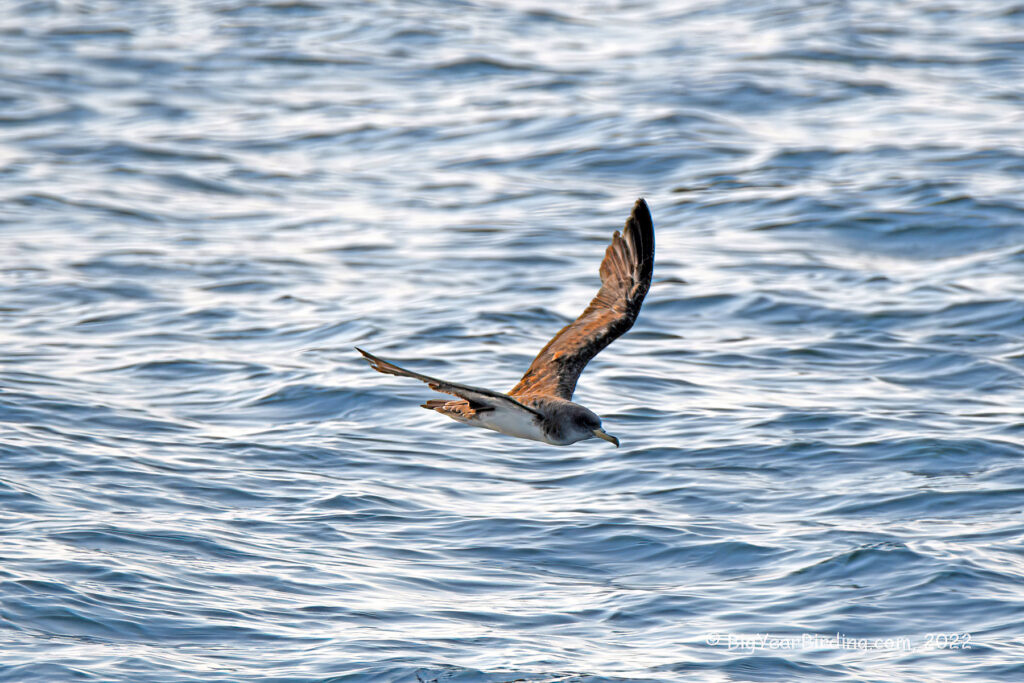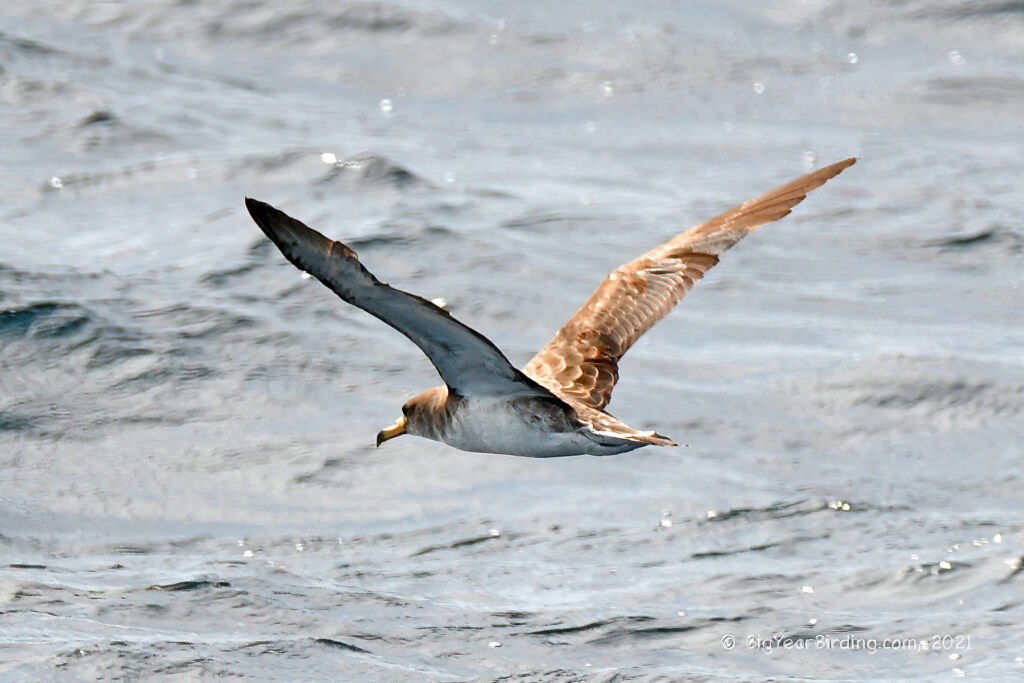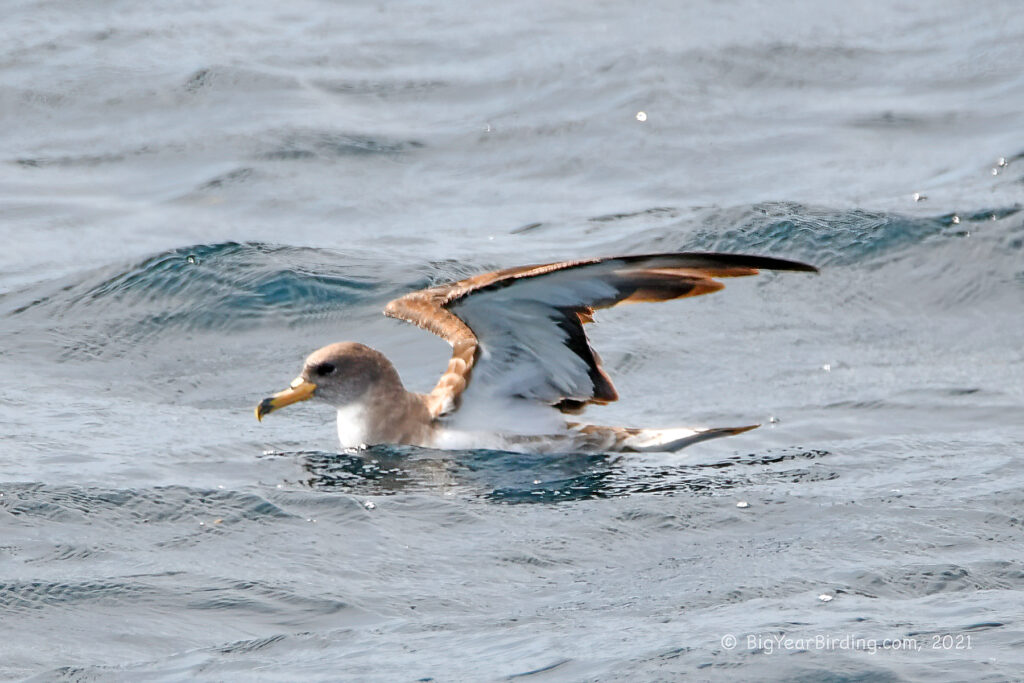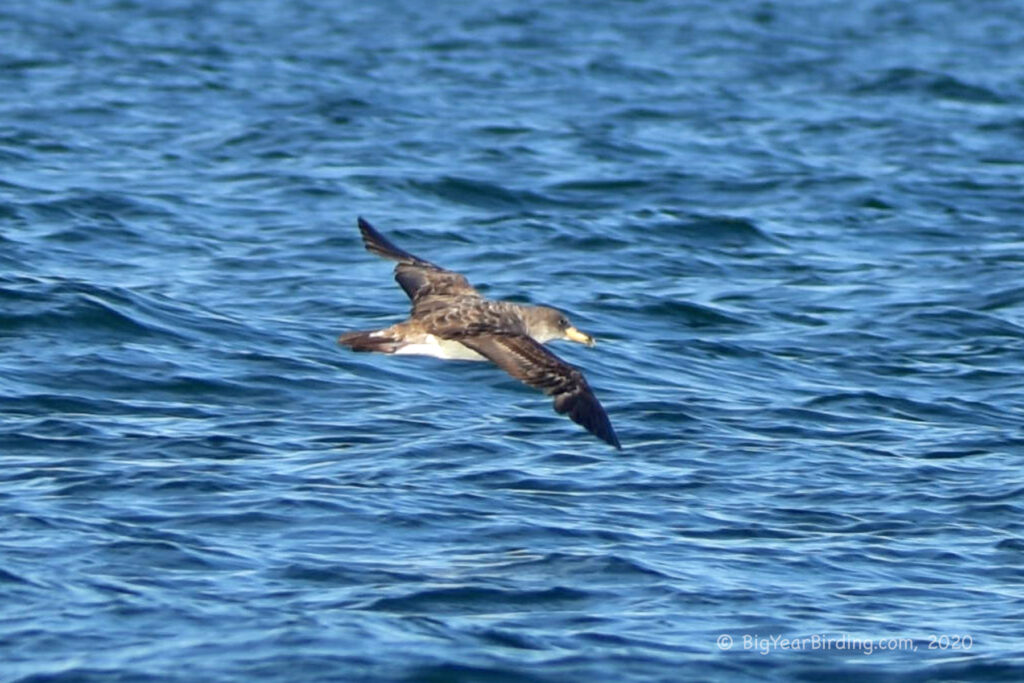
Cory’s Shearwater (Calonectris diomedea), also known as the Scopoli’s Shearwater, is a medium to large-sized seabird belonging to the Procellariidae family. It has a wingspan of about 41-46 inches (104-116 cm) and weighs around 16-24 ounces (450-680 g). The adult birds have a distinctive appearance with dark brown feathers on the upperparts and white feathers on the underparts. The bill is long and pointed, and the legs are relatively short.

The Cory’s Shearwater is a pelagic species and can be found in the eastern Atlantic Ocean, including the Mediterranean Sea and the Azores. During the breeding season, which begins in April and lasts until September, they nest on rocky cliffs or islands in colonies, usually in the Mediterranean or off the coasts of Macaronesia. Outside of the breeding season, they spend most of their time at sea, foraging for food.
One of the most distinctive characteristics of Cory’s Shearwater is their call, which is a long, deep, mournful wail. They are also known for their flight style, which is effortless and buoyant, often gliding just above the surface of the water. They feed on a variety of prey, including fish, squid, and crustaceans.
Cory’s Shearwater is a long-distance migrant and can travel up to 12,000 miles (19,300 km) during the non-breeding season. They typically migrate from their breeding grounds in the Mediterranean to wintering grounds off the coast of South Africa, and then back again to their breeding grounds. Along the way, they may make stops in various locations, including the Canary Islands, Cape Verde, and the Gulf of Guinea.

In conclusion, Cory’s Shearwater is a remarkable seabird with its distinctive appearance, call, and migration pattern. They can be found in the eastern Atlantic Ocean, nesting on rocky cliffs or islands during the breeding season and spending most of their time at sea foraging for food. They are medium to large-sized birds with a wingspan of about 41-46 inches (104-116 cm) and a weight of around 16-24 ounces (450-680 g). During the non-breeding season, they migrate up to 12,000 miles (19,300 km) to their wintering grounds off the coast of South Africa, making stops along the way in various locations.

